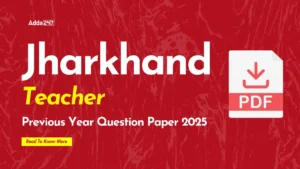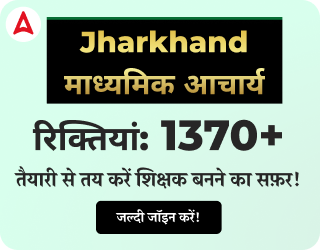Table of Contents
The UGC NET Previous Year Question Papers are a valuable resource for candidates preparing for the UGC NET Exam. These free PDFs contain complete collections of past papers with solutions, helping candidates understand the exam pattern, types of questions, and marking scheme. Downloading these papers allows candidates to practice effectively, focus on important topics, and improve time management.
UGC NET Previous Year Question Papers
The UGC NET exam consists of two papers i.e. Paper 1 (General Aptitude) with 50 questions (100 marks) on teaching aptitude, reasoning, and research, and Paper 2 (Subject-Specific) with 100 questions (100 marks) from the candidate’s chosen discipline, both conducted in Computer-Based Test (CBT) mode without negative marking. Practicing previous year question papers (PYQs) helps candidates familiarize themselves with the exam pattern, difficulty level, and important topics. To aid your preparation, we have compiled UGC NET PYQs from 2020 to 2025, providing valuable practice material to enhance your performance in the exam.
UGC NET Question Papers June 2025 PDF
The UGC NET June 2025 Memory-Based Question Papers (PDF) are now available for aspirants looking to refine their exam strategy! These subject-wise and shift-wise papers contain authentic questions recalled by candidates who appeared for the exam, providing a realistic preview of the latest exam pattern, difficulty level, and important topics. Download the PDFs now and take your UGC NET preparation to the next level!
| UGC NET 2025 Question Papers | |
| Exam | Download Question paper PDF |
| UGC NET 2025 Question Paper – 25 June 2025 Shift 1 | Download PDF |
| UGC NET 2025 EVS Question Paper – 25 June 2025 Shift 1 | Download PDF |
| UGC NET 2025 Question Paper – 25 June 2025 Shift 2 | Download PDF |
| UGC NET 2025 Question Paper – 26 June 2025 Shift 1 | Download PDF |
| UGC NET 2025 Home Science Question Paper – 26 June 2025 Shift 1 | Download PDF |
| UGC NET 2025 Question Paper – 26 June 2025 Shift 2 | Download PDF |
| UGC NET 2025 Question Paper – 27 June 2025 Shift 1 | Download PDF |
| UGC NET 2025 Question Paper – 27 June 2025 Shift 2 | Download PDF |
| UGC NET 2025 Question Paper – 28 June 2025 Shift 1 | Download PDF |
| UGC NET 2025 Question Paper – 28 June 2025 Shift 2 | Download PDF |
| UGC NET 2025 Question Paper – 29 June 2025 Shift 2 | Download PDF |
UGC NET Question Papers Jan 2025 PDF
| UGC NET Jan 2025 Question Papers – Subject Wise | |
| Subject Wise | Download PDF |
| Computer Science | Download PDF |
| History | Download PDF |
| Political Science | Download PDF |
| Sanskrit | Download PDF |
| Home Science | Download PDF |
| Physical Education | Download PDF |
| English | Download PDF |
| Ayurveda Biology | Download PDF |
| Sociology | Download PDF |
| Education | Download PDF |
| Geography | Download PDF |
UGC NET Question Paper August 2024 PDF
UGC NET Exam Pattern 2025
Candidates preparing for the UGC NET 2025 exam should review the question pattern for both Paper 1 and Paper 2 to understand the marking scheme and the weightage of each section. Paper 1 consists of 50 multiple-choice questions from various topics such as teaching aptitude, child pedagogy, mathematics, reasoning, communication, and more. Paper 2 is subject-specific and contains 100 multiple-choice questions, each with four options. Below is the UGC NET question paper pattern for reference:
| UGC NET Paper | Number of Questions | Marks |
| Paper 1 | 50 | 100 |
| Paper 2 | 100 | 200 |
| Total | 150 | 300 |
How to Use UGC NET Previous Year Question Papers Effectively
Preparing for the UGC NET exam can be challenging, but one of the most effective ways to improve your performance is by solving previous year’s question papers. Here’s how you can use these papers to your advantage:
1. Understand the Exam Pattern and Structure
The UGC NET exam has a set format that remains consistent each year. By solving previous year’s question papers, you gain a clear understanding of the exam pattern. This includes:
-
The Number of Questions: You will know the exact number of questions in each section (General Paper and Subject-Specific Paper).
-
Types of Questions: The questions are generally objective type, but understanding the types—like multiple choice questions (MCQs), statement-based questions, and assertion-reasoning questions—can help you prepare better.
-
Topic Distribution: Identifying the distribution of marks across various sections and subjects will help you focus on the most critical areas and balance your preparation time accordingly.
Being familiar with the exam format reduces exam-related stress and allows you to develop a structured approach to your preparation.
2. Practice Under Real Exam Conditions
It’s important to replicate real exam conditions when solving past question papers. Here’s how you can do it effectively:
-
Set a Timer: Set a timer for the exact duration of the exam (usually 3 hours). This will help you manage your time during the actual exam.
-
Choose the Right Environment: Find a quiet space without distractions to simulate exam conditions as closely as possible.
-
Follow the Marking Scheme: Pay attention to the marking scheme. While solving previous papers, allocate your time based on the marks assigned to each question.
This approach will help you build the stamina to sit for the full duration of the exam and help you complete the paper on time without rushing.
3. Identify Recurring Topics and Focus Areas
One of the most valuable aspects of solving previous year question papers is the identification of recurring topics. This allows you to:
-
Focus on High-Weightage Topics: Certain subjects or chapters are asked more frequently than others. By reviewing past papers, you can pinpoint these topics and dedicate more time to them.
-
Get an Insight into Trend Shifts: Exam trends can evolve. For example, in some years, the focus may be more on theory-based questions, while in others, the questions may be more application-oriented. Understanding these shifts will help you align your preparation accordingly.
Identifying key topics ensures that your preparation is targeted and efficient, saving you time and effort on topics that are less likely to appear.
4. Evaluate Your Performance and Learn from Mistakes
Merely solving previous year’s question papers is not enough; you must take time to analyze your performance. Here’s how:
-
Review Correct and Incorrect Answers: After solving the paper, go through each answer and determine why certain answers were wrong. This helps identify areas of weakness.
-
Strengthen Weak Areas: If there are certain concepts or topics where you struggled, make a note to revise those areas thoroughly.
-
Understand the Explanation: In case you’re unsure about a particular question, seek the explanation or refer to study materials to understand the reasoning behind the correct answer.
This evaluation process is critical for improving accuracy and deepening your understanding of the subject matter.
5. Use Question Papers as a Revision Tool
Past question papers are an excellent way to revise important concepts that you’ve already studied. Instead of passively reviewing notes, actively applying your knowledge through these papers reinforces learning and boosts retention. Here’s how:
-
Active Recall: When attempting each question, try to recall the concept or formula from memory, which strengthens your understanding.
-
Timed Revisions: Do this repeatedly over time to ensure the concepts stay fresh and you don’t forget them before the exam.
How to Download UGC NET Previous Year Question Papers?
The NTA has released the UGC NET Previous Year Question Paper. Candidates can download the question paper by following these steps:
- Visit the official website – ugcnet.nta.nic.in.
- Click on the link for the answer key and question paper.
- Log in using the required details.
- Download the question paper in PDF format.




 MPPSC Assistant Professor Question Paper...
MPPSC Assistant Professor Question Paper...
 MPPSC Assistant Professor Previous Year ...
MPPSC Assistant Professor Previous Year ...
 Jharkhand Teacher Previous Year Question...
Jharkhand Teacher Previous Year Question...




